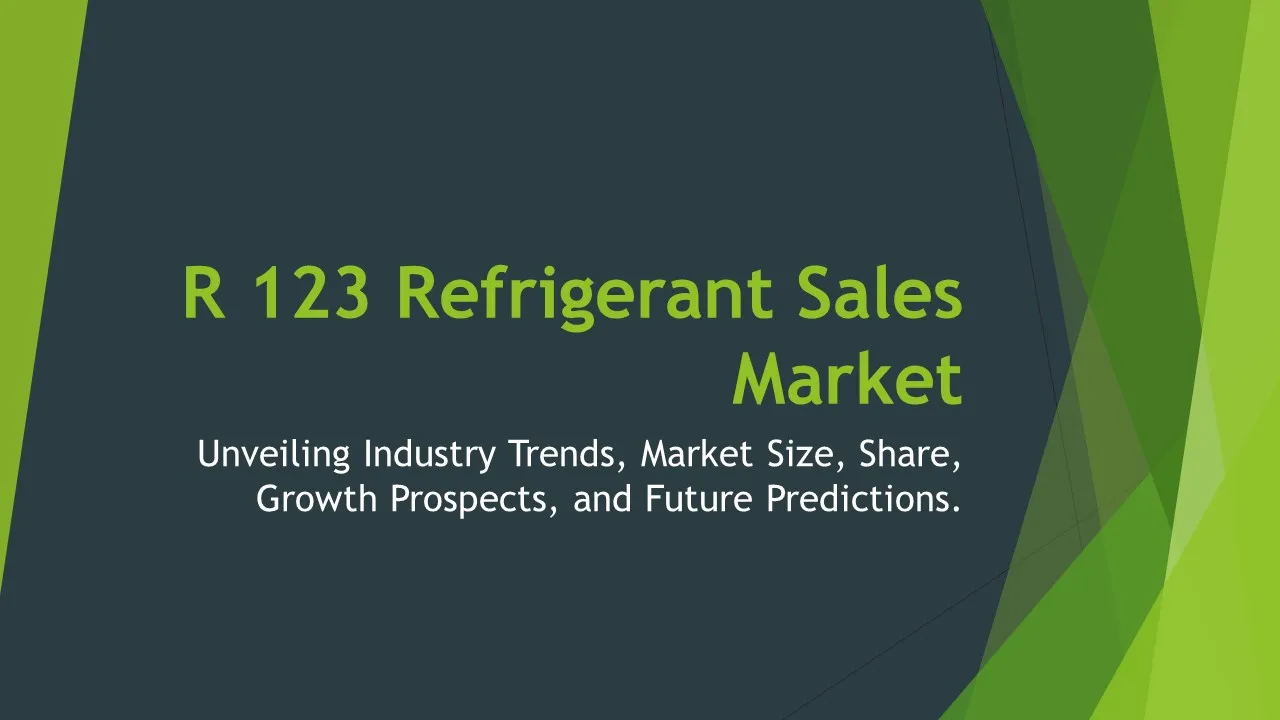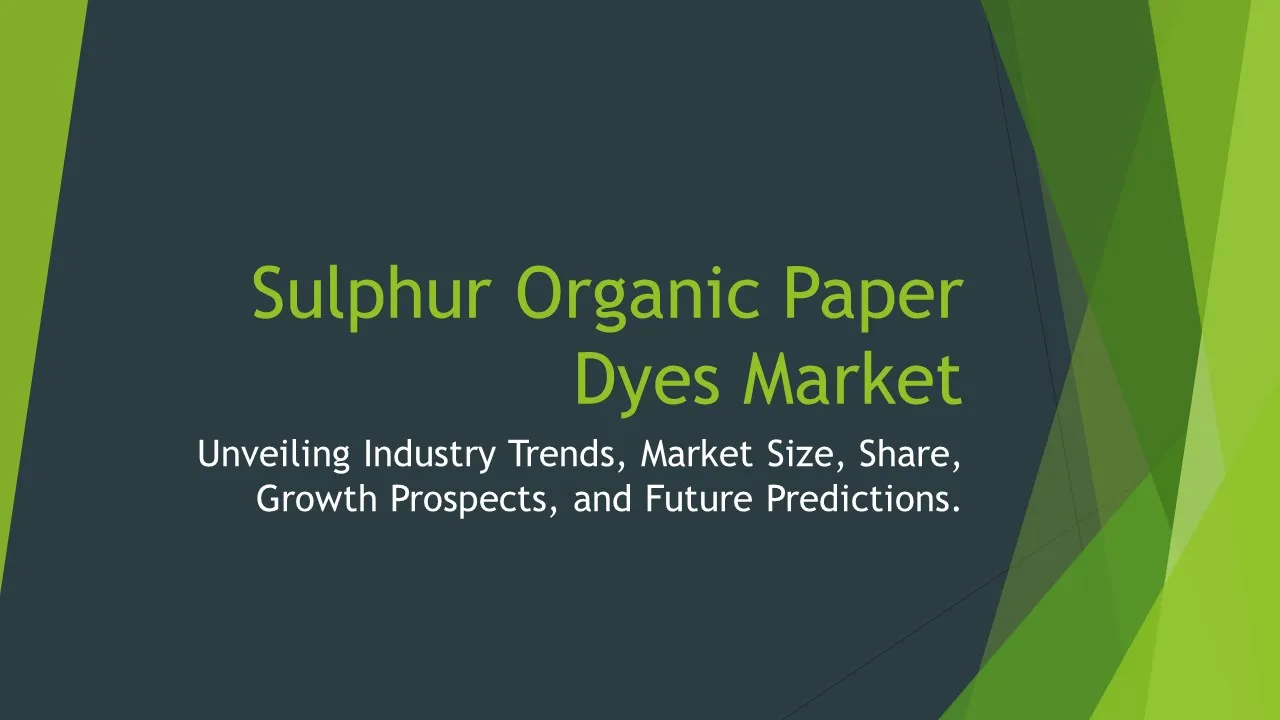Dispersing Coating Additive Sales
Dispersing Coating Additive Sales Market Segments - by Product Type (Polymeric Dispersants, Wetting Agents, Defoamers, Rheology Modifiers, Anti-settling Agents), Application (Architectural Coatings, Industrial Coatings, Automotive Coatings, Wood Coatings, Packaging Coatings), Distribution Channel (Direct Sales, Distributors, Online Retailers, Specialty Stores, Wholesalers), Ingredient Type (Acrylics, Polyurethanes, Epoxies, Alkyds, Polyesters), and Region (North America, Europe, Asia Pacific, Latin America, Middle East & Africa) - Global Industry Analysis, Growth, Share, Size, Trends, and Forecast 2025-2035
- Report Preview
- Table Of Content
- Segments
- Methodology
Dispersing Coating Additive Sales Market Outlook
The global dispersing coating additive sales market is projected to reach a value of approximately USD 12 billion by the year 2035, with a steady compound annual growth rate (CAGR) of around 5.3% from 2025 to 2035. This growth is primarily driven by the increasing demand for high-performance coatings across various industries, including automotive, building and construction, and packaging. The surge in urbanization and infrastructure development is further fueling the need for innovative coating solutions that offer improved durability and aesthetics. Moreover, the rising trend towards sustainable and eco-friendly products is encouraging manufacturers to invest in advanced additive technologies, facilitating growth in this sector. As industries strive for higher efficiency and performance, the focus on enhancing product characteristics through dispersing additives becomes even more critical.
Growth Factor of the Market
The growth factors of the dispersing coating additive market are multifaceted, encompassing various industrial trends and consumer preferences. One key factor is the rising demand for environmentally friendly and low-VOC (volatile organic compound) coatings, which aligns with global sustainability goals. As regulations around emissions tighten, manufacturers are compelled to innovate and create additives that meet these standards while maintaining product performance. Additionally, the growth of the automotive and construction sectors, particularly in emerging economies, is driving a significant increase in the demand for high-quality coatings. The expansion of manufacturing capabilities and investments in research and development to improve the efficacy of dispersing additives are also contributing to market growth. Furthermore, the increasing use of advanced technologies in the production process, including digitalization and automation, is allowing companies to optimize their operations and enhance product offerings. Finally, strategic collaborations and partnerships among key players are fostering innovation and bringing new products to market, contributing to the overall growth of the sector.
Key Highlights of the Market
- The market is expected to grow at a CAGR of 5.3% during the forecast period.
- Polymeric dispersants and wetting agents are anticipated to dominate the product type segment.
- The architectural coatings application segment is projected to hold the largest market share.
- Direct sales and online retail channels are increasingly preferred by consumers for the procurement of additives.
- Asia Pacific is expected to exhibit the highest growth due to rapid industrialization and urbanization.
By Product Type
Polymeric Dispersants:
Polymeric dispersants are widely used in the formulation of coatings due to their ability to improve the stability and performance of the final product. These additives help in reducing the viscosity of coatings and enhancing their flow properties, which is crucial during application. The polymeric nature of these dispersants allows them to effectively stabilize pigments and fillers, preventing sedimentation and ensuring uniform distribution throughout the coating. As industries demand higher-quality finishes, the significance of polymeric dispersants has grown, making them an indispensable component in many formulations. Furthermore, advancements in polymer technology are continuously evolving the capabilities of these dispersants, making them more efficient and eco-friendly.
Wetting Agents:
Wetting agents play a critical role in ensuring proper adhesion of coatings to surfaces, thereby enhancing the overall performance of the coating system. These agents work by reducing the surface tension of the liquid coating, allowing it to spread more easily on various substrates. As a result, wetting agents are essential in applications where smooth and uniform surfaces are required, such as in architectural and automotive coatings. The demand for high-quality finishes in these sectors drives the need for effective wetting agents, which in turn promotes their development and inclusion in commercial formulations. Various types of wetting agents, including anionic, cationic, and non-ionic, cater to diverse substrate needs, further boosting their market presence.
Defoamers:
Defoamers are additives used to eliminate or prevent the formation of foam in coatings, which can negatively impact the appearance and performance of the final product. The presence of foam during application can lead to defects such as surface imperfections and uneven finishes, making defoamers critical in achieving high-quality coatings. The growth of industries such as paints and coatings, where foam control is essential, has significantly contributed to the demand for defoamers. Moreover, advances in formulation technology have led to the development of specialized defoamers that can cater to different systems, including water-based and solvent-based formulations, thereby enhancing their applicability and usage across various sectors.
Rheology Modifiers:
Rheology modifiers are key additives that influence the flow and viscosity characteristics of coatings, ensuring optimal application properties. These modifiers help in achieving the desired consistency and stability, which is vital for the performance of coatings during storage and application. The demand for rheology modifiers has surged as manufacturers focus on producing coatings that are easy to apply, with excellent leveling and sag resistance. In particular, industries such as automotive and industrial coatings require precise rheological properties to meet performance standards. As a result, rheology modifiers are a critical component in the formulation of high-performance coatings, further enhancing their market significance.
Anti-settling Agents:
Anti-settling agents are essential in preventing the settling of pigments and fillers in paints and coatings, thereby ensuring long-term stability and uniformity. These additives are especially important in formulations that contain high levels of solids, where the risk of sedimentation is greater. The increasing trend towards more sustainable coatings that utilize higher concentrations of pigments for enhanced color and coverage drives the need for effective anti-settling agents. By maintaining a uniform dispersion of solids, anti-settling agents contribute to improved application properties and finished product quality, making them a vital component in various coating systems.
By Application
Architectural Coatings:
Architectural coatings represent one of the largest segments for dispersing coating additives, driven by the growing demand for residential and commercial building projects. Architectural coatings require high durability, aesthetic appeal, and resistance to environmental factors, which are achieved through the incorporation of dispersing additives. The trend towards customization and innovation in architectural designs has also led to an increase in demand for specialized coatings that require advanced additive technologies. Furthermore, the rising awareness of sustainable building practices is encouraging manufacturers to develop eco-friendly architectural coatings, further enhancing the importance of dispersing additives in this sector.
Industrial Coatings:
Industrial coatings are essential for protecting surfaces in various applications, from machinery to infrastructure. The need for durable and resilient coatings in harsh environments drives the demand for high-performance dispersing additives. These coatings often require specific properties, such as chemical resistance, corrosion protection, and improved adhesion, all of which are enhanced by the use of dispersing additives. As industries expand and modernize, the demand for innovative and effective industrial coatings continues to grow, further propelling the market for dispersing coating additives. Additionally, the increasing focus on safety and compliance with regulatory standards in industrial applications amplifies the need for high-quality coating solutions.
Automotive Coatings:
Automotive coatings are designed to provide not only aesthetic appeal but also protect vehicles from environmental damage and wear. The automotive sector's focus on improving vehicle longevity and performance has led to a significant increase in the usage of dispersing additives in coatings. Coatings used in vehicles require advanced properties such as scratch resistance, UV protection, and chemical stability, all of which can be achieved through the careful selection and use of dispersing additives. As the automotive industry shifts towards electric vehicles and sustainable materials, there is potential for growth in innovative coating formulations that leverage dispersing technologies.
Wood Coatings:
Wood coatings require specific properties to enhance the beauty and durability of wooden surfaces. The demand for high-quality wood coatings, particularly in furniture and flooring, has led to an increased focus on dispersing additives that can improve adhesion, flow properties, and protection against environmental factors. As consumer preferences shift towards natural and sustainable materials, the wood coatings market is evolving, and manufacturers are investing in advanced dispersing technologies to meet these demands. The performance of wood coatings can significantly impact product longevity, making dispersing additives a key component in achieving optimal results.
Packaging Coatings:
In the packaging sector, coatings are essential for protecting products and enhancing aesthetics. Dispersing additives play a critical role in achieving uniformity and stability in coating formulations, crucial for maintaining the quality of packaged goods. With the growth of e-commerce and the need for packaging that withstands the rigors of transport, the demand for effective packaging coatings is on the rise. In addition, as sustainability becomes a focal point in packaging, there is a growing emphasis on developing coatings that are recyclable and environmentally friendly, further driving the need for innovative dispersing additives in this segment.
By Distribution Channel
Direct Sales:
Direct sales channels have become increasingly popular in the dispersing coating additive market as manufacturers seek to establish closer relationships with their customers. This approach allows for better communication and understanding of specific customer needs, enabling companies to tailor their products accordingly. Direct sales also facilitate faster feedback loops, ensuring that companies can adapt their offerings to meet changing market demands. Moreover, the elimination of intermediaries can result in cost savings for both manufacturers and customers, making it an attractive option for businesses looking to optimize their operations. As a result, direct sales are expected to continue to grow in importance within this market.
Distributors:
Distributors play a vital role in the dispersing coating additive market by providing access to a wider customer base and enhancing distribution efficiency. They serve as intermediaries between manufacturers and end-users, ensuring that products are readily available across different geographical locations. Distributors often have established relationships with various industries and can offer valuable insights into market trends and customer preferences. This segment is particularly important for smaller manufacturers who may lack the resources to establish widespread direct sales channels. As the demand for dispersing additives continues to rise, the role of distributors in facilitating market access is expected to expand.
Online Retailers:
The growth of e-commerce has transformed the way consumers purchase dispersing coating additives, with online retailers becoming an increasingly popular distribution channel. This shift allows for greater accessibility and convenience, as customers can easily compare products and make informed purchasing decisions from the comfort of their own homes. Online platforms also provide manufacturers with valuable data regarding customer preferences and purchasing patterns, which can inform product development and marketing strategies. As consumers become more accustomed to online shopping, it is anticipated that online retailers will continue to capture a larger share of the market, offering opportunities for growth in the dispersing coating additive sector.
Specialty Stores:
Specialty stores provide a unique distribution channel for dispersing coating additives, attracting customers who seek expert advice and specialized products. These stores often have knowledgeable staff who can assist customers in selecting the right additives for their specific needs, enhancing the overall shopping experience. The presence of specialty stores can also create a sense of community among professionals in the coatings industry, providing forums for sharing knowledge and best practices. As customers increasingly seek personalized service and expertise, the importance of specialty stores in the dispersing coating additive market is expected to remain strong.
Wholesalers:
Wholesalers serve as an essential distribution channel in the dispersing coating additive market, facilitating bulk purchases and providing competitive pricing for customers. They buy products directly from manufacturers and sell them to retailers or other businesses, helping to streamline the supply chain. As industries demand larger quantities of additives for production processes, the role of wholesalers becomes increasingly important. Their ability to provide efficient logistics and inventory management solutions can significantly impact the market dynamics, particularly in times of fluctuating demand. As the need for cost-effective solutions grows, wholesalers are likely to maintain their relevance in the dispersing coating additive sector.
By Ingredient Type
Acrylics:
Acrylics are among the most widely used ingredient types in the formulation of dispersing coating additives, known for their versatility and excellent performance characteristics. These materials offer high clarity, UV resistance, and good adhesion properties, making them suitable for a variety of applications, including architectural and industrial coatings. The growing emphasis on sustainability has also led to an increased interest in water-based acrylic formulations, which are seen as environmentally friendly alternatives to solvent-based systems. As demand for high-quality coatings continues to rise, the use of acrylics in dispersing additives is expected to expand further, supported by ongoing innovations in acrylic technology.
Polyurethanes:
Polyurethanes are valued for their durability and flexibility, making them a popular choice in the dispersing additive market. These materials provide excellent chemical resistance and mechanical properties, which are critical for coatings used in harsh environments. The automotive and industrial sectors, in particular, benefit from the use of polyurethane-based dispersing additives, as they enhance the performance and longevity of coatings. The increasing trend towards high-performance coatings drives the demand for polyurethane additives, further solidifying their position in the market. Ongoing research and development efforts are also focused on creating eco-friendly polyurethane formulations, aligning with the growing demand for sustainable product solutions.
Epoxies:
Epoxies are renowned for their exceptional adhesion and thermal resistance, making them a crucial component in the formulation of dispersing coating additives. These materials are particularly effective in applications that require robust protective coatings, such as industrial and automotive sectors. Epoxy-based additives contribute to enhanced performance characteristics, including corrosion resistance and durability, which are essential for maintaining product integrity in challenging environments. As industries prioritize quality and performance, the use of epoxy dispersing additives is expected to rise, supported by advancements in epoxy resin technologies that cater to emerging market needs.
Alkyds:
Alkyds are traditional ingredients in the coating industry, prized for their excellent gloss and durability. These materials are commonly used in solvent-based formulations, offering good adhesion and resistance to weathering. With the ongoing shift towards more sustainable practices, there is increasing interest in developing eco-friendly alkyds, including water-based formulations. The use of alkyds in dispersing additives remains significant, particularly in architectural and industrial coatings, where their performance characteristics are highly valued. As manufacturers seek to balance quality and sustainability, innovative alkyd technologies will continue to play a role in the market.
Polyesters:
Polyesters are widely utilized in the production of dispersing coating additives due to their favorable mechanical properties and versatility. These materials are known for their excellent chemical resistance and durability, making them suitable for various applications, including automotive and industrial coatings. The trend towards high-performance coatings is driving the demand for polyester-based dispersing additives, as they contribute to improved product characteristics such as hardness and flexibility. As the focus on sustainable formulations grows, advancements in polyester technology that prioritize eco-friendliness are expected to gain traction, further enhancing their importance in this market.
By Region
The regional analysis of the dispersing coating additive market reveals significant variations in demand and growth potential across different areas. North America holds a prominent position in this market, driven by the presence of a well-established manufacturing base and a strong focus on innovation in coating solutions. The region is expected to witness a CAGR of approximately 4.8% between 2025 and 2035, fueled by increasing investments in infrastructure and the automotive sector. In addition, the rising emphasis on sustainable and eco-friendly products is encouraging North American manufacturers to adopt advanced additive technologies, further supporting market expansion.
In Europe, the dispersing coating additive market is characterized by a robust demand for high-performance coatings driven by stringent regulatory standards and a growing emphasis on sustainability. The region is projected to experience steady growth as manufacturers innovate to meet the evolving needs of industries such as automotive, construction, and packaging. Moreover, the Asia Pacific region is anticipated to showcase the highest growth rate during the forecast period, fueled by rapid industrialization, urbanization, and increasing infrastructure development. Countries such as China and India are leading this trend, with significant investments being made in the coatings sector, contributing to the overall growth of the dispersing coating additive market.
Opportunities
The dispersing coating additive market is poised for substantial opportunities in the coming years, primarily due to the growing demand for sustainable and eco-friendly products. As consumers and industries increasingly prioritize environmental responsibility, manufacturers are encouraged to develop innovative additives that minimize their impact on the environment. This shift towards sustainability presents a unique opportunity for companies that can provide high-performance and low-VOC formulations, enabling them to capture a larger market share. Additionally, the ongoing advancements in technology and manufacturing processes offer opportunities for enhancing product performance and reducing costs, further benefiting market players.
Moreover, the expansion of the automotive and construction industries, particularly in emerging economies, opens new avenues for growth in the dispersing coating additive market. As these sectors continue to evolve, there is a growing need for advanced coating solutions that offer enhanced durability, aesthetics, and protection against environmental factors. Manufacturers who can successfully identify and address the specific needs of these industries will be well-positioned to capitalize on market opportunities. Furthermore, strategic partnerships and collaborations among key players are likely to facilitate innovation and accelerate the development of new products, contributing to the overall growth of the market.
Threats
Despite the promising growth outlook for the dispersing coating additive market, certain threats could impact its trajectory. One significant threat is the volatility of raw material prices, which can affect the production costs of dispersing additives. Fluctuations in the prices of chemicals and polymers may lead manufacturers to increase their prices, potentially deterring customers and impacting overall demand. Additionally, the growing competition from alternative coating technologies, such as powder coatings and water-based solutions, poses a challenge to traditional dispersing additives. As industries seek to optimize their processes and reduce environmental footprints, the shift towards these alternatives may impact the market for dispersing additives.
Another potential threat is the increasing regulatory scrutiny surrounding chemicals and additives used in coatings. Stricter environmental regulations may require manufacturers to reformulate their products, which could lead to increased costs and extended product development timelines. In this context, companies must remain agile and responsive to regulatory changes to ensure compliance and avoid disruptions in their operations. Furthermore, the ongoing economic uncertainties and fluctuations in global trade can pose risks to market stability, potentially affecting supply chains and customer demand for dispersing coating additives.
Competitor Outlook
- BYK-Chemie GmbH
- Evonik Industries AG
- BASF SE
- Dow Chemical Company
- Huntsman Corporation
- WACKER Chemie AG
- RPM International Inc.
- Elementis PLC
- Clariant AG
- Solvay SA
- Arkema SA
- Lonza Group Ltd.
- Michelman Inc.
- Kraton Corporation
- Omnova Solutions Inc.
The competitive landscape of the dispersing coating additive market is characterized by the presence of several key players that dominate the industry. These companies are engaged in extensive research and development activities to innovate and enhance their product offerings, catering to the evolving needs of customers across various sectors. The focus on sustainability and environmentally-friendly products is a common theme among these competitors, with many investing in new technologies and formulations that reduce environmental impact. Additionally, strategic acquisitions and partnerships are common strategies employed by these companies to expand their market reach and strengthen their product portfolios, resulting in a highly dynamic and competitive environment.
Several major players have established themselves as leaders in the market, with BYK-Chemie GmbH being a prominent manufacturer known for its comprehensive range of additives that improve coating performance. The company's commitment to innovation and sustainability has enabled it to maintain a competitive edge, with a strong focus on developing products that comply with stringent environmental standards. Similarly, BASF SE, a global leader in chemicals, has invested heavily in research and development to enhance its dispersing additive offerings, ensuring that they meet the requirements of a diverse range of applications.
Evonik Industries AG is another key player that has made significant strides in the dispersing coating additive market. The company specializes in high-performance additives that enhance the quality and stability of coatings. With a strong emphasis on sustainability, Evonik's products are designed to meet the growing demand for eco-friendly coating solutions. Additionally, Dow Chemical Company has a well-established presence in the industry, providing a wide array of dispersing additives that cater to various sectors, including automotive, industrial, and architectural coatings. Dow's commitment to innovation and sustainability positions it favorably within the competitive landscape of the market.
1 Appendix
- 1.1 List of Tables
- 1.2 List of Figures
2 Introduction
- 2.1 Market Definition
- 2.2 Scope of the Report
- 2.3 Study Assumptions
- 2.4 Base Currency & Forecast Periods
3 Market Dynamics
- 3.1 Market Growth Factors
- 3.2 Economic & Global Events
- 3.3 Innovation Trends
- 3.4 Supply Chain Analysis
4 Consumer Behavior
- 4.1 Market Trends
- 4.2 Pricing Analysis
- 4.3 Buyer Insights
5 Key Player Profiles
- 5.1 BASF SE
- 5.1.1 Business Overview
- 5.1.2 Products & Services
- 5.1.3 Financials
- 5.1.4 Recent Developments
- 5.1.5 SWOT Analysis
- 5.2 Arkema SA
- 5.2.1 Business Overview
- 5.2.2 Products & Services
- 5.2.3 Financials
- 5.2.4 Recent Developments
- 5.2.5 SWOT Analysis
- 5.3 Solvay SA
- 5.3.1 Business Overview
- 5.3.2 Products & Services
- 5.3.3 Financials
- 5.3.4 Recent Developments
- 5.3.5 SWOT Analysis
- 5.4 Clariant AG
- 5.4.1 Business Overview
- 5.4.2 Products & Services
- 5.4.3 Financials
- 5.4.4 Recent Developments
- 5.4.5 SWOT Analysis
- 5.5 Elementis PLC
- 5.5.1 Business Overview
- 5.5.2 Products & Services
- 5.5.3 Financials
- 5.5.4 Recent Developments
- 5.5.5 SWOT Analysis
- 5.6 Michelman Inc.
- 5.6.1 Business Overview
- 5.6.2 Products & Services
- 5.6.3 Financials
- 5.6.4 Recent Developments
- 5.6.5 SWOT Analysis
- 5.7 BYK-Chemie GmbH
- 5.7.1 Business Overview
- 5.7.2 Products & Services
- 5.7.3 Financials
- 5.7.4 Recent Developments
- 5.7.5 SWOT Analysis
- 5.8 Lonza Group Ltd.
- 5.8.1 Business Overview
- 5.8.2 Products & Services
- 5.8.3 Financials
- 5.8.4 Recent Developments
- 5.8.5 SWOT Analysis
- 5.9 WACKER Chemie AG
- 5.9.1 Business Overview
- 5.9.2 Products & Services
- 5.9.3 Financials
- 5.9.4 Recent Developments
- 5.9.5 SWOT Analysis
- 5.10 Kraton Corporation
- 5.10.1 Business Overview
- 5.10.2 Products & Services
- 5.10.3 Financials
- 5.10.4 Recent Developments
- 5.10.5 SWOT Analysis
- 5.11 Dow Chemical Company
- 5.11.1 Business Overview
- 5.11.2 Products & Services
- 5.11.3 Financials
- 5.11.4 Recent Developments
- 5.11.5 SWOT Analysis
- 5.12 Evonik Industries AG
- 5.12.1 Business Overview
- 5.12.2 Products & Services
- 5.12.3 Financials
- 5.12.4 Recent Developments
- 5.12.5 SWOT Analysis
- 5.13 Huntsman Corporation
- 5.13.1 Business Overview
- 5.13.2 Products & Services
- 5.13.3 Financials
- 5.13.4 Recent Developments
- 5.13.5 SWOT Analysis
- 5.14 Omnova Solutions Inc.
- 5.14.1 Business Overview
- 5.14.2 Products & Services
- 5.14.3 Financials
- 5.14.4 Recent Developments
- 5.14.5 SWOT Analysis
- 5.15 RPM International Inc.
- 5.15.1 Business Overview
- 5.15.2 Products & Services
- 5.15.3 Financials
- 5.15.4 Recent Developments
- 5.15.5 SWOT Analysis
- 5.1 BASF SE
6 Market Segmentation
- 6.1 Dispersing Coating Additive Sales Market, By Application
- 6.1.1 Architectural Coatings
- 6.1.2 Industrial Coatings
- 6.1.3 Automotive Coatings
- 6.1.4 Wood Coatings
- 6.1.5 Packaging Coatings
- 6.2 Dispersing Coating Additive Sales Market, By Product Type
- 6.2.1 Polymeric Dispersants
- 6.2.2 Wetting Agents
- 6.2.3 Defoamers
- 6.2.4 Rheology Modifiers
- 6.2.5 Anti-settling Agents
- 6.3 Dispersing Coating Additive Sales Market, By Ingredient Type
- 6.3.1 Acrylics
- 6.3.2 Polyurethanes
- 6.3.3 Epoxies
- 6.3.4 Alkyds
- 6.3.5 Polyesters
- 6.4 Dispersing Coating Additive Sales Market, By Distribution Channel
- 6.4.1 Direct Sales
- 6.4.2 Distributors
- 6.4.3 Online Retailers
- 6.4.4 Specialty Stores
- 6.4.5 Wholesalers
- 6.1 Dispersing Coating Additive Sales Market, By Application
7 Competitive Analysis
- 7.1 Key Player Comparison
- 7.2 Market Share Analysis
- 7.3 Investment Trends
- 7.4 SWOT Analysis
8 Research Methodology
- 8.1 Analysis Design
- 8.2 Research Phases
- 8.3 Study Timeline
9 Future Market Outlook
- 9.1 Growth Forecast
- 9.2 Market Evolution
10 Geographical Overview
- 10.1 Europe - Market Analysis
- 10.1.1 By Country
- 10.1.1.1 UK
- 10.1.1.2 France
- 10.1.1.3 Germany
- 10.1.1.4 Spain
- 10.1.1.5 Italy
- 10.1.1 By Country
- 10.2 Asia Pacific - Market Analysis
- 10.2.1 By Country
- 10.2.1.1 India
- 10.2.1.2 China
- 10.2.1.3 Japan
- 10.2.1.4 South Korea
- 10.2.1 By Country
- 10.3 Latin America - Market Analysis
- 10.3.1 By Country
- 10.3.1.1 Brazil
- 10.3.1.2 Argentina
- 10.3.1.3 Mexico
- 10.3.1 By Country
- 10.4 North America - Market Analysis
- 10.4.1 By Country
- 10.4.1.1 USA
- 10.4.1.2 Canada
- 10.4.1 By Country
- 10.5 Middle East & Africa - Market Analysis
- 10.5.1 By Country
- 10.5.1.1 Middle East
- 10.5.1.2 Africa
- 10.5.1 By Country
- 10.6 Dispersing Coating Additive Sales Market by Region
- 10.1 Europe - Market Analysis
11 Global Economic Factors
- 11.1 Inflation Impact
- 11.2 Trade Policies
12 Technology & Innovation
- 12.1 Emerging Technologies
- 12.2 AI & Digital Trends
- 12.3 Patent Research
13 Investment & Market Growth
- 13.1 Funding Trends
- 13.2 Future Market Projections
14 Market Overview & Key Insights
- 14.1 Executive Summary
- 14.2 Key Trends
- 14.3 Market Challenges
- 14.4 Regulatory Landscape
Segments Analyzed in the Report
The global Dispersing Coating Additive Sales market is categorized based on
By Product Type
- Polymeric Dispersants
- Wetting Agents
- Defoamers
- Rheology Modifiers
- Anti-settling Agents
By Application
- Architectural Coatings
- Industrial Coatings
- Automotive Coatings
- Wood Coatings
- Packaging Coatings
By Distribution Channel
- Direct Sales
- Distributors
- Online Retailers
- Specialty Stores
- Wholesalers
By Ingredient Type
- Acrylics
- Polyurethanes
- Epoxies
- Alkyds
- Polyesters
By Region
- North America
- Europe
- Asia Pacific
- Latin America
- Middle East & Africa
Key Players
- BYK-Chemie GmbH
- Evonik Industries AG
- BASF SE
- Dow Chemical Company
- Huntsman Corporation
- WACKER Chemie AG
- RPM International Inc.
- Elementis PLC
- Clariant AG
- Solvay SA
- Arkema SA
- Lonza Group Ltd.
- Michelman Inc.
- Kraton Corporation
- Omnova Solutions Inc.
- Publish Date : Jan 20 ,2025
- Report ID : CH-13217
- No. Of Pages : 100
- Format : |
- Ratings : 4.5 (110 Reviews)
Related reports








